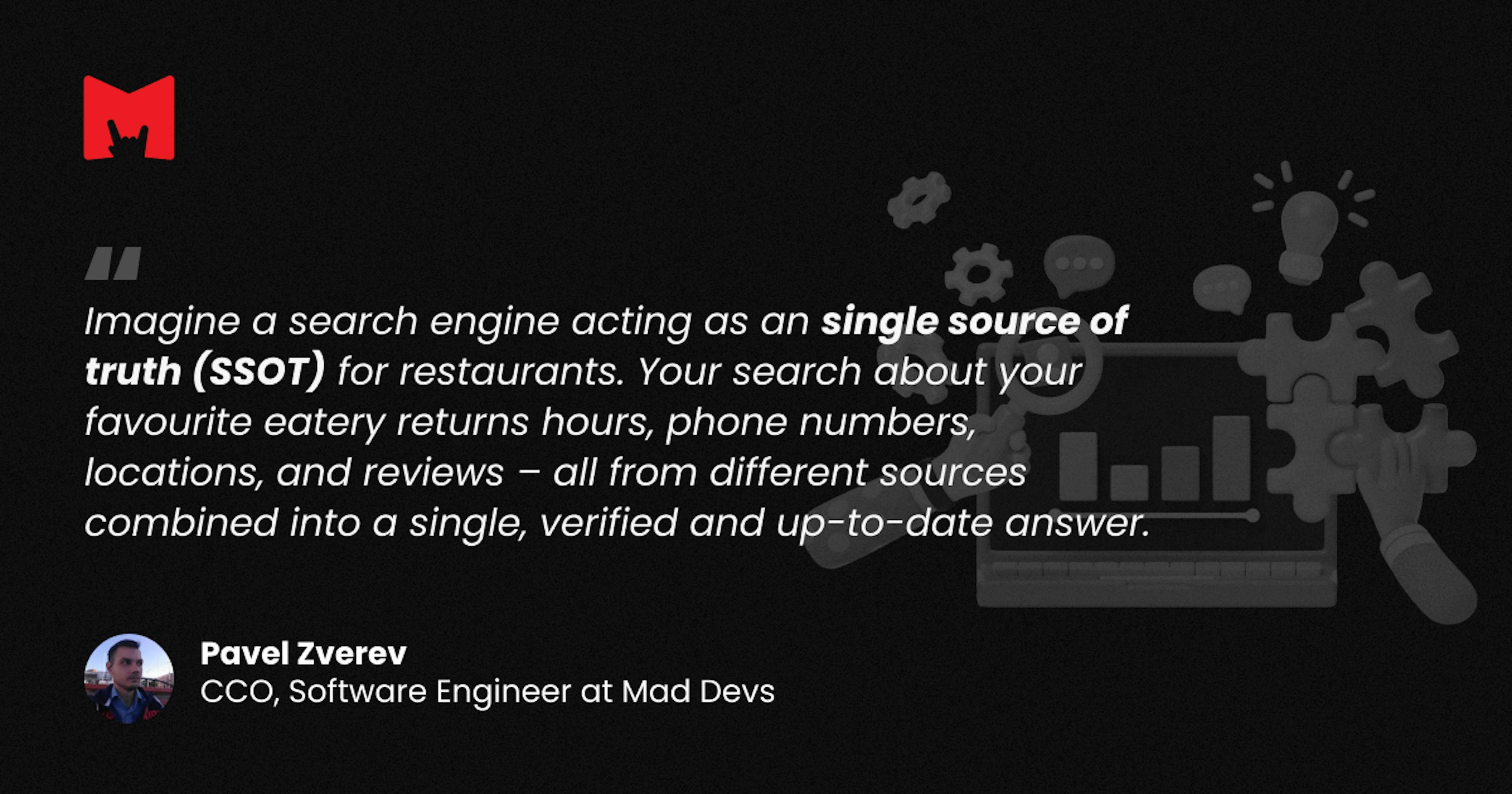
No Bad Questions About System Design
Definition of Single source of truth (SSOT)
What is a single source of truth?
Single source of truth (SSOT) architecture ensures that all data elements are managed or edited in just one place within an information system. This approach maintains data consistency and integrity by organizing information models and schemas, avoiding duplication, and ensuring a unified data structure.

What are the benefits of the single truth principle?
The SSOT principle guarantees consistency and integrity in decision-making across organizational departments. Companies can evade discrepancies and conflicting interpretations from multiple data sources with a unified data source.
This leads to several benefits:
- Everyone has access to the same accurate and up-to-date information, enabling data-driven decisions across the organization.
- Teams can work together effectively with a common understanding of the data.
- Eliminates the risk of basing decisions on inconsistent or outdated information.
- Streamlines data management and reduces time spent searching for accurate information.
How does a single source of truth work?
Implementing an SSOT involves consolidating data from various sources, cleaning and validating it for accuracy, and establishing consistent processes. Achieving an SSOT requires a concerted effort:
- Integration strategy: Establish a plan for seamlessly connecting and syncing data from various systems across the organization. This involves defining how data will be exchanged and managed.
- Data gathering: Collect data from all relevant sources within the organization. This could include databases, spreadsheets, customer relationship management (CRM) systems, and individual files.
- Data cleansing & validation: The collected data is cleaned and validated for accuracy and consistency. This might involve removing duplicates, correcting errors, and ensuring data formats are compatible across different sources.
- Standardization: To create a unified reference point, standardized rules and processes are established. This defines how data is entered, stored, accessed, and updated across the organization.
- Centralized repository: The clean, validated, and standardized data is then housed in a centralized repository.
- Data sharing: Ensure all departments and teams provide access to their systems and data. Collaboration and transparency are crucial for building a comprehensive SSOT.
- Ongoing maintenance: Maintaining the SSOT is crucial. It requires continuous monitoring to ensure data remains accurate and updated and that any changes are reflected consistently across the system.
Key Takeaways
- A Single Source of Truth (SSOT) consolidates data from different systems into a centralized repository, providing a unified reference point for accurate and up-to-date information.
- The Single Truth Principle benefits: ensures uniformity and integrity in decision-making processes, facilitates effective teamwork with a shared understanding of data, minimizes errors by eliminating inconsistencies and outdated information, and streamlines data management, saving time and resources.
- Achieving an SSOT involves implementing an integration strategy, establishing a data gathering with validation, and promoting data sharing among departments to streamline processes and enhance data management and maintenance.

